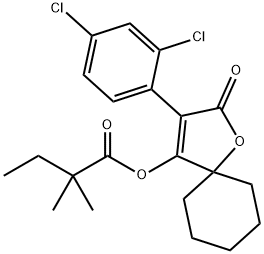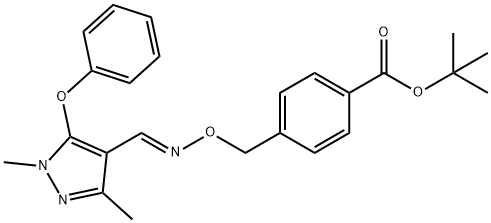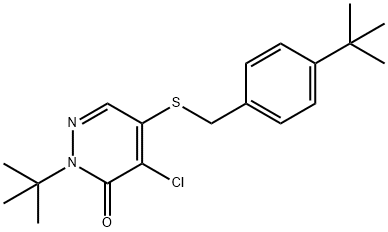Spirodiclofen , 100μg/mlinn-hexane , 148477-71-8
Synonym(s):
3-(2,4-Dichlorophenyl)-2-oxo-1-oxaspiro[4.5]dec-3-en-4-yl) 2,2-dimethylbutyrate
CAS NO.:148477-71-8
Empirical Formula: C21H24Cl2O4
Molecular Weight: 411.32
MDL number: MFCD04972571
EINECS: 604-636-5
| Pack Size | Price | Stock | Quantity |
| 1.2ml | RMB184.00 | In Stock |
|
| others | Enquire |
PRODUCT Properties
| Melting point: | 101-108° |
| Boiling point: | 550.2±50.0 °C(Predicted) |
| Density | 1.28±0.1 g/cm3(Predicted) |
| vapor pressure | 0-0Pa at 20-25℃ |
| Flash point: | 4 °C |
| storage temp. | 0-6°C |
| solubility | Chloroform (Slightly), DMSO, Methanol (Sparingly) |
| form | Solid |
| color | White to Off-White |
| InChIKey | DTDSAWVUFPGDMX-UHFFFAOYSA-N |
| LogP | 5.83 at 20℃ and pH4 |
| EPA Substance Registry System | Spirodiclofen (148477-71-8) |
Description and Uses
Spirodiclofen is a new selective, non systemic acaricide belonging to the chemical group of the spirocyclic tetronic acid derivatives. It acts by interfering with mite development, thereby controlling such pests as Panonychus spp., Phyllocoptruta spp., Brevipalpus spp., and Aculus and Tetranychus species. Spirodiclofen is active by contact to mite eggs, all nymphal stages, and adult females (adult males are not effected). Spirodiclofen is structurally similar to spiromesifen, which is also a tetronic acid insecticide. Spirodiclofen is registered worldwide for use on a variety of crops including citrus, pome fruits, stone fruits, grapes and ornamentals.
Spirodiclofen is a tetronic acid acaricide fungicide used in controlling red mites. Spirodiclofen is used in cannabis testing kits as a component of pesticide mixes (P698240).
Safety
| Symbol(GHS) |    GHS07,GHS08,GHS09 |
| Signal word | Danger |
| Hazard statements | H317-H350-H361f-H373-H410 |
| Precautionary statements | P201-P202-P273-P280-P302+P352-P308+P313 |
| Hazard Codes | Xi,Xn,F |
| Risk Statements | 43-67-65-63-48/20-38-11 |
| Safety Statements | 36/37-62 |
| RIDADR | UN1294 3/PG 2 |
| WGK Germany | 2 |
| Hazardous Substances Data | 148477-71-8(Hazardous Substances Data) |
| Toxicity | LD50 in rats (mg/kg): >2500 orally; >2000 dermally (24 hr); LC50 (4 hr) in rats (mg/m3): >5000 by inhalation; LC50 (96 hr) in fish: >68 mg/l (Wachendorff) |





